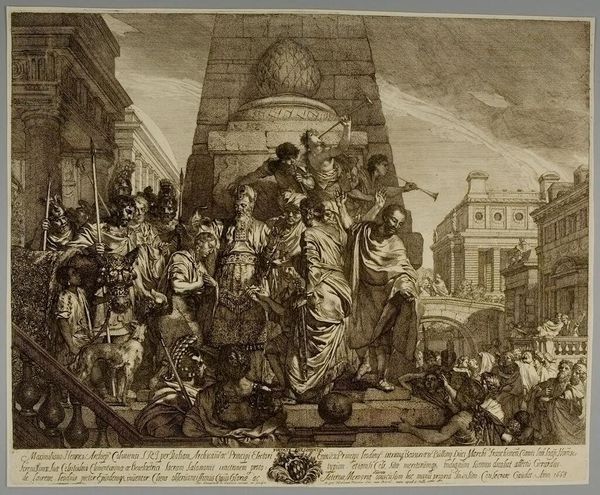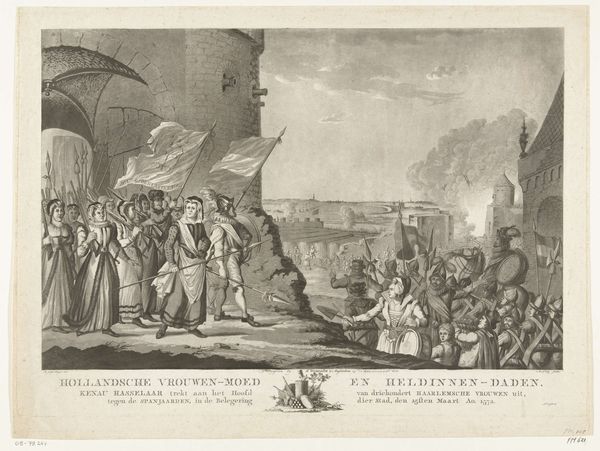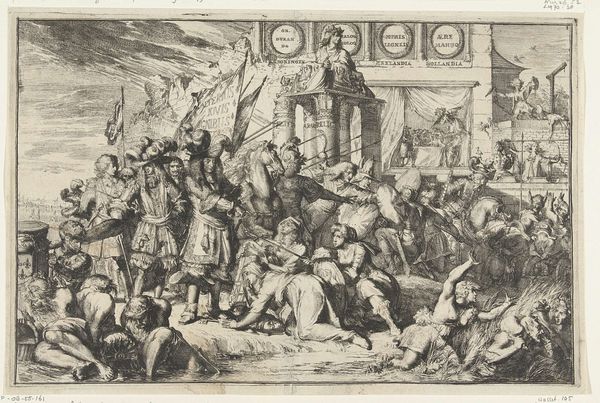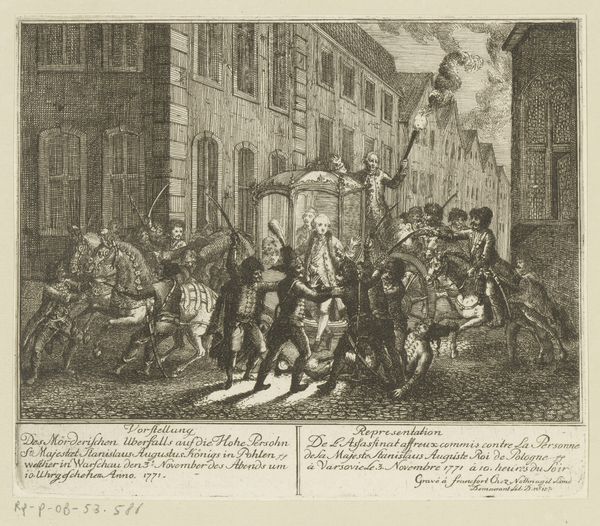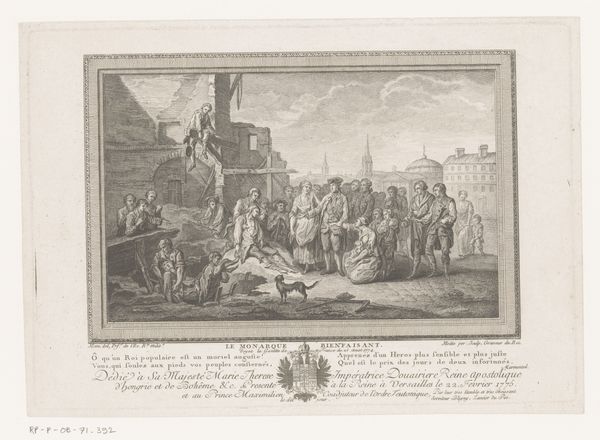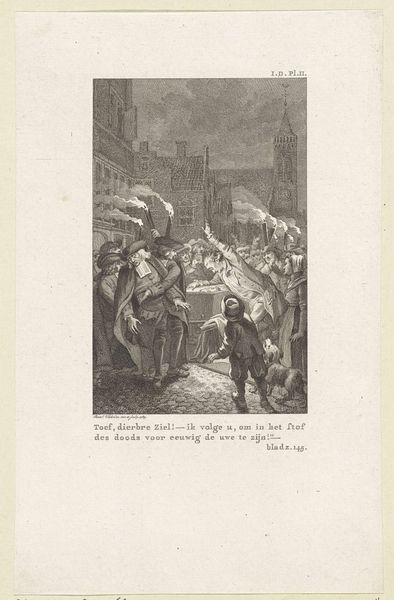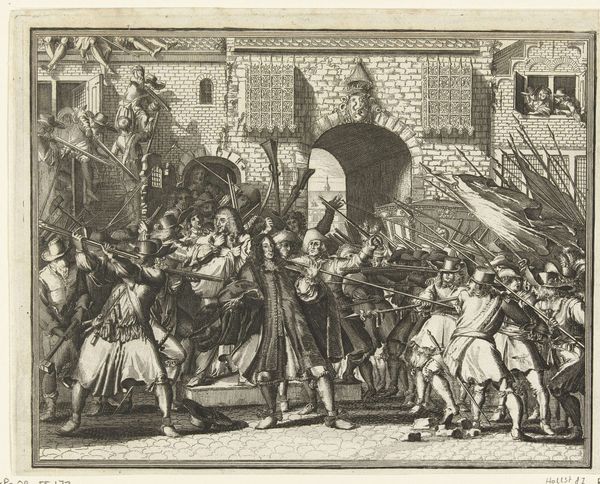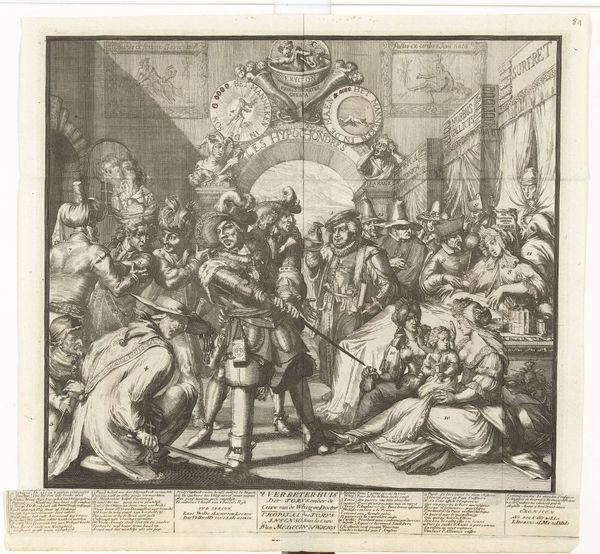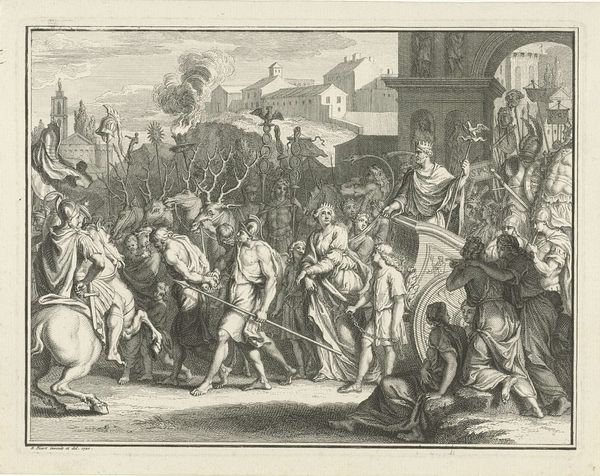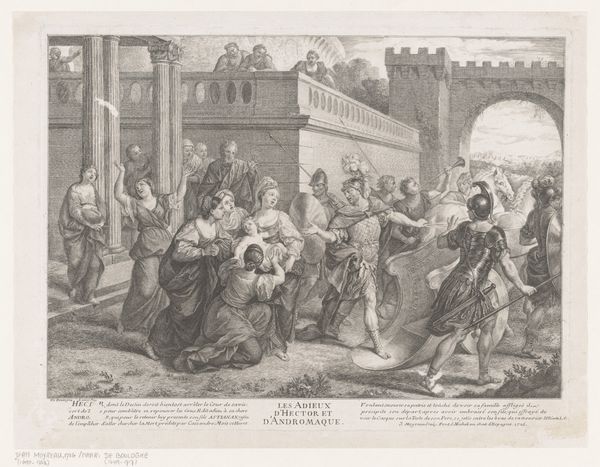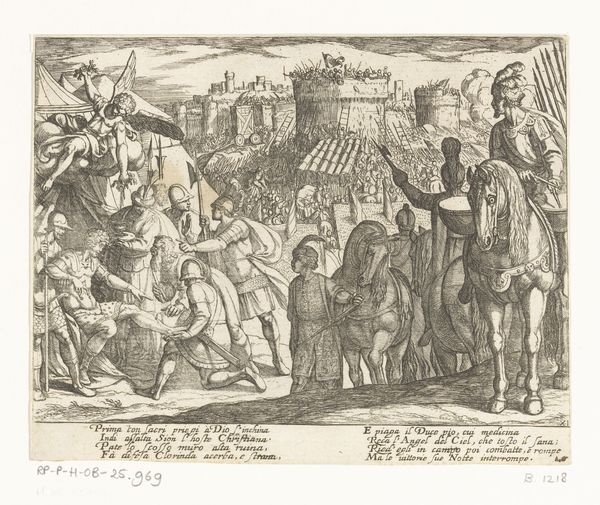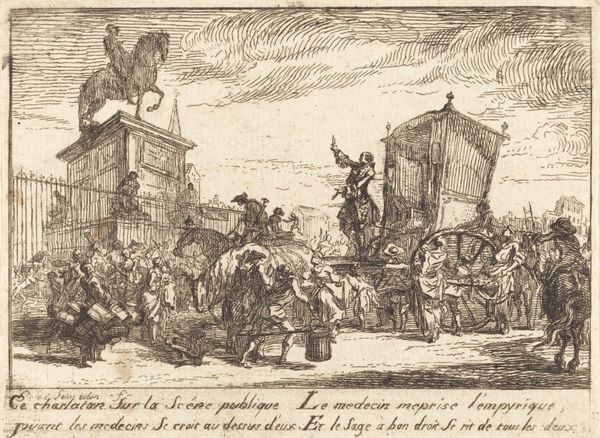
engraving
#
narrative-art
#
baroque
#
old engraving style
#
figuration
#
history-painting
#
academic-art
#
engraving
Dimensions: height 430 mm, width 534 mm
Copyright: Rijks Museum: Open Domain
Gerard de Lairesse created this print, The Anointing of Solomon, using engraving, a process that involves meticulously cutting lines into a metal plate. Look closely, and you’ll see how the varying thickness and density of these lines create the illusion of light, shadow, and texture. The engraver’s skill is evident in the fine details: the folds of the robes, the architectural elements, and the expressions on the figures’ faces. Engraving like this demands immense patience, precision, and a deep understanding of materials, requiring years of apprenticeship. In its time, printmaking was not just a reproductive medium, but a crucial means of disseminating visual information, spreading ideas, and shaping cultural tastes. The labor-intensive nature of engraving also meant that prints were valuable commodities, reflecting the economic realities of the art world. Considering the material process reminds us that every artwork is the result of skilled labor, technical knowledge, and broader social and economic forces.
Comments
rijksmuseum about 2 years ago
⋮
Standing left of centre is the priest Zadok, who anoints the kneeling Solomon as king of Israel. De Lairesse was here clearly intent on displaying his artistic skills. Portraying a large group of people crowded together and seen from a low vantage point is quite a challenge. The inscription pinxit (in the text below) suggests that the print is after a painting which is no longer known.
Join the conversation
Join millions of artists and users on Artera today and experience the ultimate creative platform.
